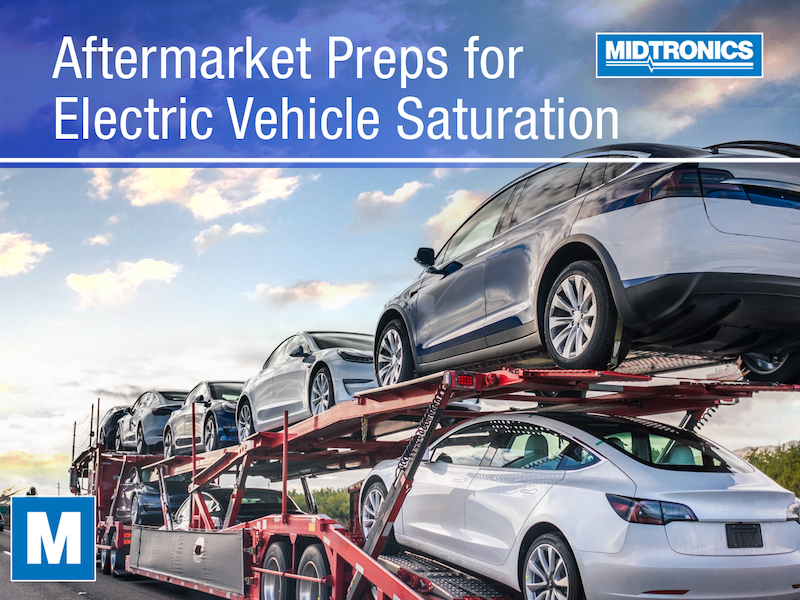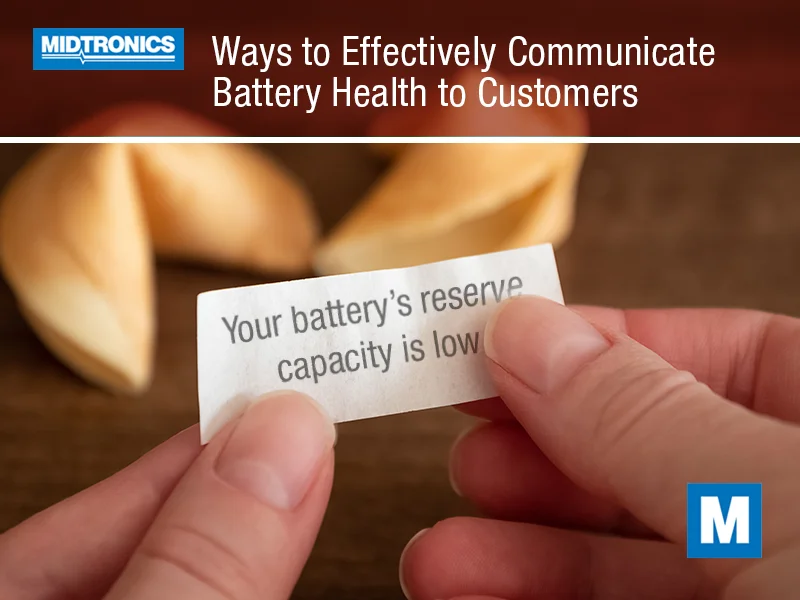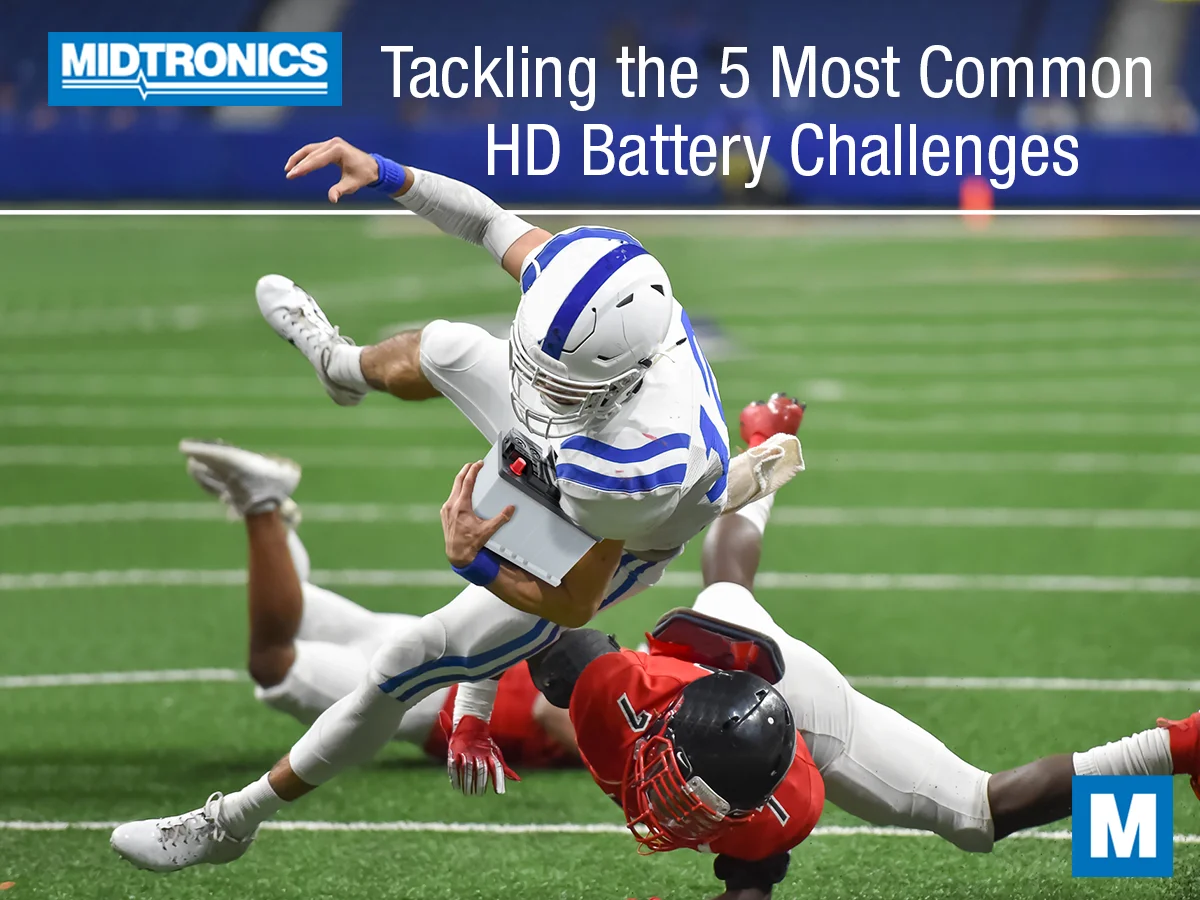California has set a target of 2035 to ban the sale of ICE vehicles, embracing the surge of popularity of EVs and the belief that it will effectively reduce emissions. More than a dozen other states have made similar commitments over the past year as well. And while new car dealerships are moving to modify their service facilities to accommodate this shift, the reality is that aftermarket service providers have a massive opportunity to retain their share of the market.
But that’s only if they’re prepared to service electric cars. It requires a major change for their personnel and their business structure, not to mention technology investments to stay at the forefront. What does the aftermarket need to do to get ready for a sector saturated by EVs?
The Surge in EV Sales and the Impending Aftermarket Opportunity
Throughout 2022, new vehicle registrations in the electric vehicle market grew to more than 750,000 units in the US alone. That represents a modest 5.6% of vehicles sold, but that figure is growing at a blistering rate. From 2021 to 2022, EV sales grew in the US by 55%, and there’s no sign that it will change going forward, nor any reason to expect it will. Worldwide, the market has grown to 14 million units, and by 2030, EVs are expected to make up 60% of new sales in the three largest markets of China, Europe, and the US.
Of those cars, the warranty period remains similar to ICE vehicles – three years or 36,000 miles for many of the popular brands. EV batteries have a longer warranty period, federally mandated to be at least eight years or 100,000 miles. But what we know of car owners is that they defect from franchised service departments in droves by the time their cars are out of warranty, and while numbers are wide-ranging, it’s estimated between 50% and 70% of car owners abandon their dealership by the three-year mark of ownership.
EV owners are likely to be the same, and their cars will still need to be serviced, even after the ‘bumper-to-bumper’ warranty expires – albeit in different ways than an ICE vehicle. That represents a major opportunity for forward-thinking shops.
The Current Landscape: The Rise of EVs in Repair Shops
Over the past two years, roughly double the number of EVs have emerged on the roads, and those cars require servicing occasionally. According to EV Solutions, EVs should have a service check twice per year, particularly for tire rotations, and vehicle inspection, and a service check. And while there’s less fluid maintenance and mechanical repairs, there will still be instances of physical damage, electrical concerns, collision repairs, and battery servicing. With the expectation of 1 million EVs to be sold in the US in 2023, facilities can expect demand to increase quickly with a total of 2.7 million EVs to account for 5.4 million service visits to spread among capable facilities.
A broader selection of EVs will be available soon too, and that’s sure to boost demand, and of course, that means more cars in the service shop. And like any other car owner, EV drivers are price-conscious and will be looking to the aftermarket for their services and repairs.
Generally, ICE vehicles will remain dominant through the next decade, and likely even longer as they slowly phase out from the roadways. Yet, shops need to prepare for the future challenges now, and EVs require a unique skill set to work on them, as well as specialized equipment. It’s no surprise that facilities are hesitant to act right now on this growth pattern, even when the opportunities are already evident.
Market Potential: Unleashing the Power of the Aftermarket
As electric cars enter the market and reach the end of their warranty period, the market potential rises at a feverish rate for the aftermarket. In the US alone, there are 1.7 million EVs as of the end of 2022, and nearly all of those will be out of warranty by the end of 2025, and more than half of those owners will be seeking service from the aftermarket.
Look forward to the year 2030. A projected 18 million EVs are expected to be on US roads at that time, representing a tenfold growth in the market. Again, each of those vehicles will require service, although in a lesser capacity than ICE vehicles, and the aftermarket is positioned perfectly, as always to capture much of the business from those customers.
Now, the lifetime maintenance cost compared to ICE vehicles is lower – $4,600 for an EV’s lifetime compared to $9,200 for repairs and maintenance on an ICE vehicle over its lifetime – but there are excellent opportunities that aftermarket shops will not want to miss. They can include:
- Steering and suspension parts
- Wheel alignments
- Tire sales
- 12-volt battery sales
- Air conditioning services and repairs
- High-voltage battery pack servicing
- And more
And, arguably an important factor, seldom are these services and repairs going to plug up repair shops for days on end, unlike a major engine or transmission overhaul or replacement, saving the shop time.
Evolving Repair Needs: Understanding the Unique Characteristics of EVs
Inevitably, some revenue generators and marketing techniques like loss-leader oil changes and brake replacements will be either less necessary or non-existent for EVs since they don’t require oil changes and regenerative braking severely reduces instances of brake repairs. Simply, there are fewer systems to fail in an electric car than in an internal combustion engine-powered vehicle.
And for EVs, repair shops that are at the forefront of adoption will require an investment in equipment that’s necessary to safely work on them such as discharging a battery pack. Specialized training is also required for service staff to prevent costly and extremely hazardous accidents, whether that’s from ASE certification, from an OEM’s programs, or from secondary education sources.
Aftermarket repair shops are uniquely positioned to continue capturing service business from out-of-warranty car owners, especially as EV sales skyrocket. It will require certified technicians that are knowledgeable and trained to take care of these vehicles and the technology to back them up when repairs need to be done. With the right equipment, factors like Safety Power Capacity – a 12-volt battery’s ability to support critical operating systems – can be diagnosed to keep EVs working well and drivers safe.
Out-of-warranty EV service is a burgeoning market, and aftermarket facilities shouldn’t be concerned about disappearing ICE vehicles anytime soon. By preparing for a quickening transition to electrification, shops can capture their fair share of both markets.




